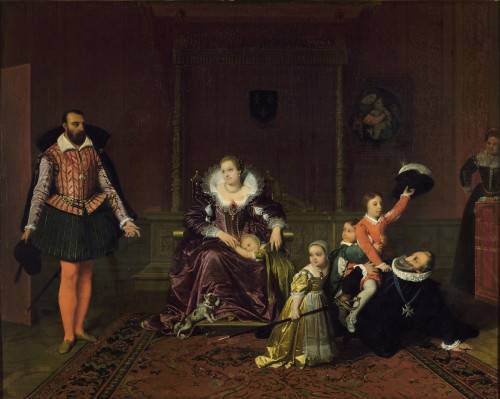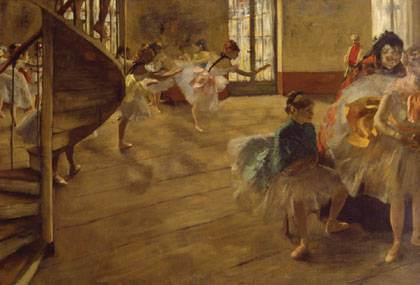
Jean-Auguste-Dominique Ingres, “Henri IV recevant l’ambassadeur d’Espagne”, 1817
‘Power Plays’ at the Louvre ‘Power Plays’ – Exhibition at the Louvre illustrate the evolution of the codes behind the representation of political power. September 27, 2017 – July 2, 2018.]]>
Source: Louvre Museum
The exhibition is divided into four sections:
“Princely Roles”: The first room presents the king’s functions— priest, builder, warrior/protector—as portrayed through different artistic media. Notable examples are Philippe de Champaigne’s Louis XIII, Léonard Limosin’s enamel Crucifixion Altarpiece, and the Triad of Osorkon II from ancient Egypt.
“Legitimacy through Persuasion”: The focus in the second room is on the emblematic figure of Henri IV, initially a king in search of legitimacy, then a model for the Bourbon heirs from Louis XVI to the Restoration. Features include sculptures by Barthélémy Prieur and François-Joseph Bosio, and paintings by Frans Pourbus the Younger, Ingres, and others.
“The Antique Model”: The theme of the third room is the equestrian statue. The Louvre is home to several remarkable examples, among them the Barberini Ivory leaf, a bronze of Charles the Bald, and François Girardon’s Louis XIV.
“The Insignia of Power”: In the fourth room majestic portraits of monarchs, including Antoine-François Callet’s Louis XVI and François Gérard’s Napoleon I, are accompanied by the regalia used during the coronation of the kings of France. This final section also highlights the dramatic historical and representational changes that came with the French Revolution.
Related content
‘Drawings for Paintings in the Age of Rembrandt’ at NGA Washington (exhibition, 2016-2017)
Follow us on:


